Entries Tagged as 'Sarah'
April 30th, 2010 · 1 Comment
As many of you know by now, travel has played a huge role in my life since high school when I first went to Australia with People to People Student Ambassadors. I’ve now been a member of People to People International for 6 years and have travelled all over the world with them. When I was looking at colleges, I specifically searched for school with expansive study abroad programs and global opportunities, and that’s how I ended up at Dickinson. I’ve always been grateful for the opportunities I’ve been offered and I understand that I am very lucky to have had so many wonderful experiences at a young age and I have always tried to not take them for granted.
However, I’ve recently realized that there is one thing I have taken for granted–the fact that I have the physical ability to travel. During my frantic search for volunteering opportunities, I came across Holidays from Home, an organization that creates virtual holidays for people who are unable to physically travel because of physical conditions, disease, extreme phobia, finances, etc. The founder, Claire Wade, developed the idea of a virtual holiday when she was 18. She suffered from Myalgic Encephalomyelitits (ME), more commonly known as Chronic Fatigue Syndrome, and could not travel despite her dreams of seeing the world. She decided that she wouldn’t let her physical ailments stop her and used her imagination to develop a holiday in Greece, a destination she dreamed of visiting. Realizing how exciting a virtual holiday can be for those who are homebound, Claire began to expand her idea.
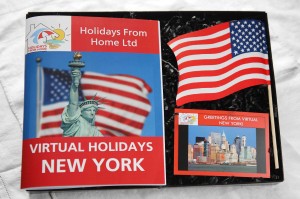
Holidays from Home currently markets gift packages than contain virtual holidays to New York and Australia. They also offer a chocolate tasting tour around the world that stops in Saint Lucia, Mexico, and Belgium. Each itinerary is seven days long. For example, the New York holiday visits Ellis Island, Wall St., 5th Avenue Shopping, Broadway, the Empire State Building, Bryant Park, Central Park, the Bronx Zoo, numerous museums and more. The chocolate tour comes with sample truffles and chocolate beans to taste and smell during the virtual holiday.
I discovered Holidays from Home on the UEA Volunteers webpage. Claire was looking for individuals to document their travel experiences to be used in future virtual holiday packages. As we were about to leave UEA for the Easter holiday, I thought it would be a good opportunity for my to share my travel experience with others. I took extensive notes during and after the holiday about each country and the cities/sites I visited, some of which I will share with everyone in my next post.
Tags: Sarah
At the beginning of the semester, I was really excited to start my potential volunteering project, but as time went on a mix of bad luck and poor responses from potential sources made the volunteering requirement for the semester rather frustrating for me. Because my paper focuses on analyzing the quality of treatment offered in the UK for those suffering from eating disorders. My original plan was to volunteer once a week at the Norfolk Eating Disorders Association located in the city centre, but unfortunately the times they had available conflicted with my academic schedule. My next option was to contact various sources around Norfolk and London to try to get a bunch of interviews to help me with my project. I sent out a number or e-mails and made phone calls to these places and mostly got negative responses. Of the positive responses I got, many failed to follow through with actually answering the questions I sent to them or with setting up appointments to meet in person. One doctor offered to give me a tour of his treatment centre, but when I told him that I would greatly appreciate it and would like to set up an appointment, he never responded. The one woman who was kind enough to make an appointment with me ended up having to cancel for personal reasons. For a while it seemed to me as if I would never get my hours completed simply because I was having the worst luck in finding people who would be willing to talk to me.
I had never experience such cold responses when I was looking to volunteer for or research any cause previously, so I was (and still am) a bit shocked by my experience. Upon reflection, I know there are things I could have done differently. I could have been much more persistent with my contact. I also might have gotten better responses if I showed up to these places in person and asked if I could set up an appointment to speak with someone, though I was afraid I would take the time to travel and end up being shut down. Still, I wonder why it was so difficult for me to get in touch with people who could help me–maybe it was the sensitive nature of their work or maybe they were simply too busy.
I eventually refocused my energies into finding any volunteer opportunity rather than just those that related to my project. Now, my volunteer hours will be a combination of both related and unrelated experience. I eventually found Holidays from Home, with which I am currently working. There will be more posts to come about that experience. I also managed to secure an appointment with a counselor at the UEA Counselling Service, who will be helping me with my project. I also plan to go to some GPs in the Norwich area, to see what kind of information they have available to help me with my research paper.
Tags: Sarah
September 15th, 2009 · 3 Comments
Instead of regurgitating into this blog post all of the research I did for my Hyde Park group walking tour, I’d like to present green spaces in a slightly different manner. This photoessay will show my impressions of what green spaces mean to London.
So, what are green spaces?
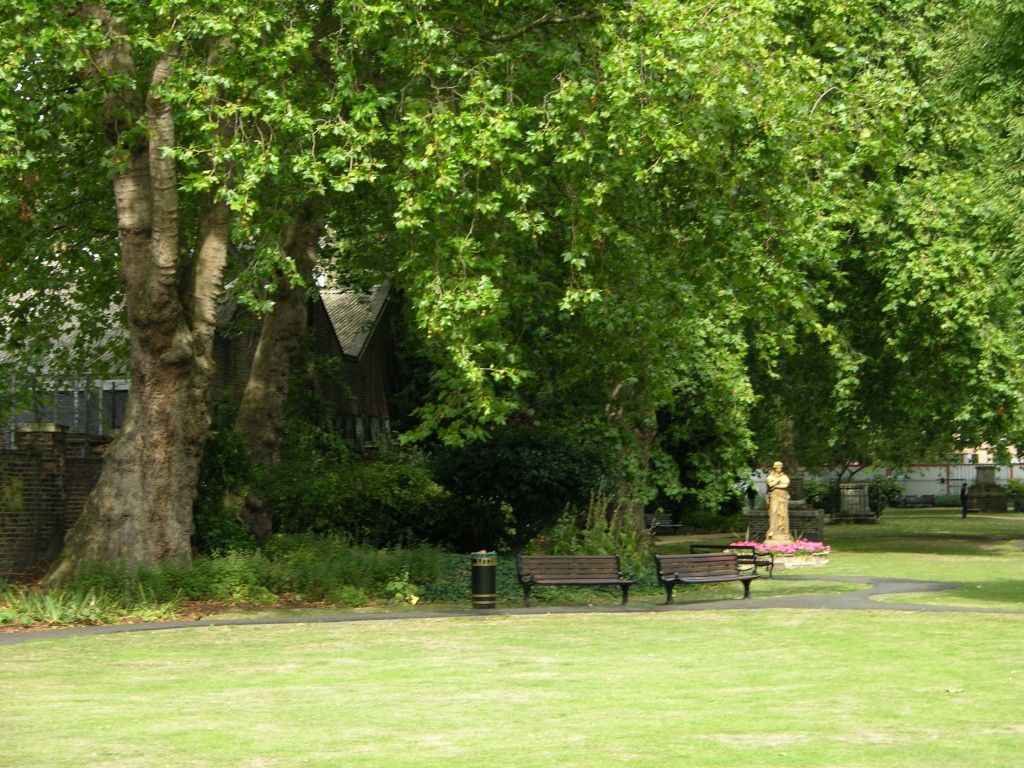
Green spaces are very, very green.
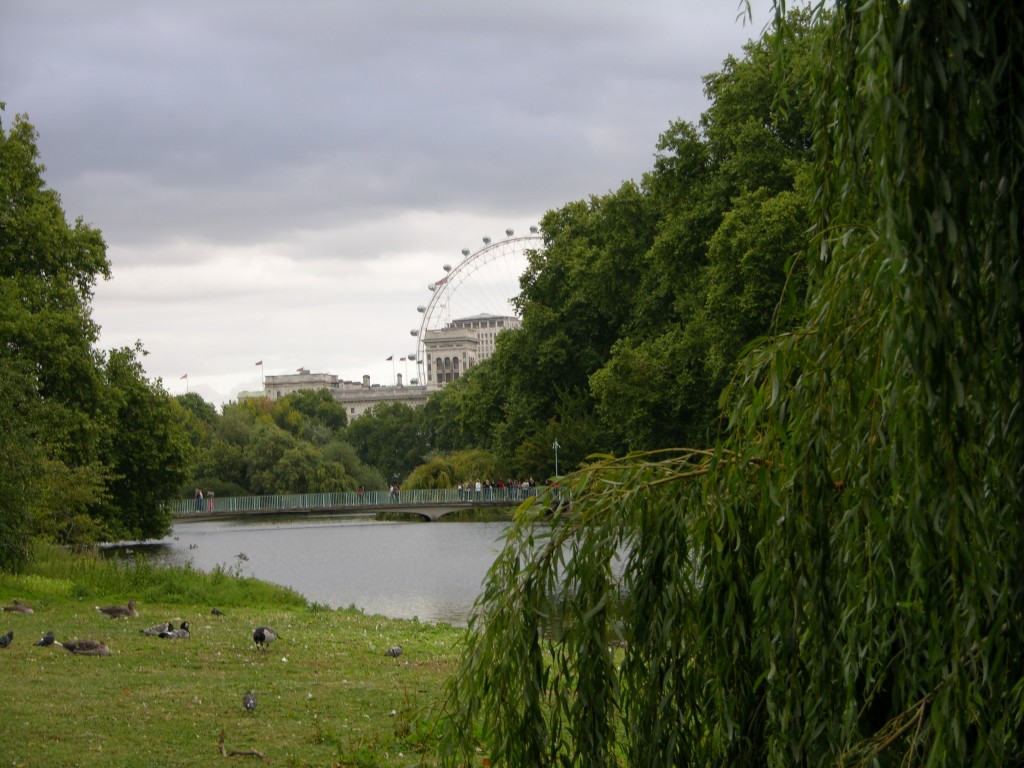
They are right in the middle of a busy city...
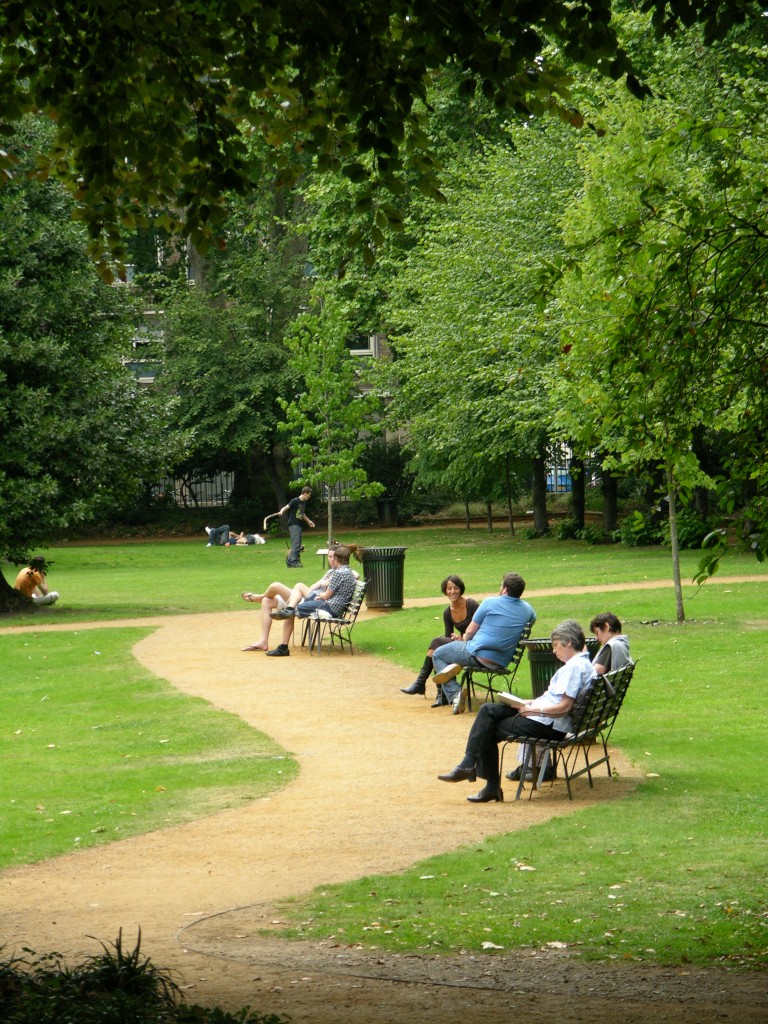
but quiet enough to sit and read.
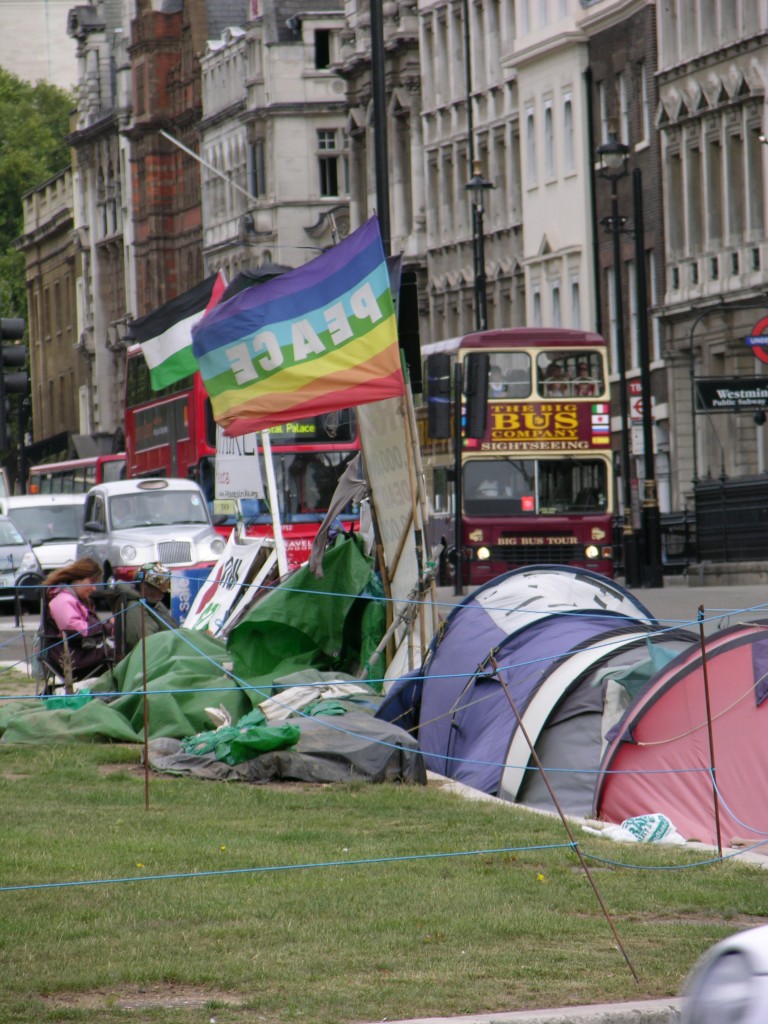
Green spaces are political

beautiful
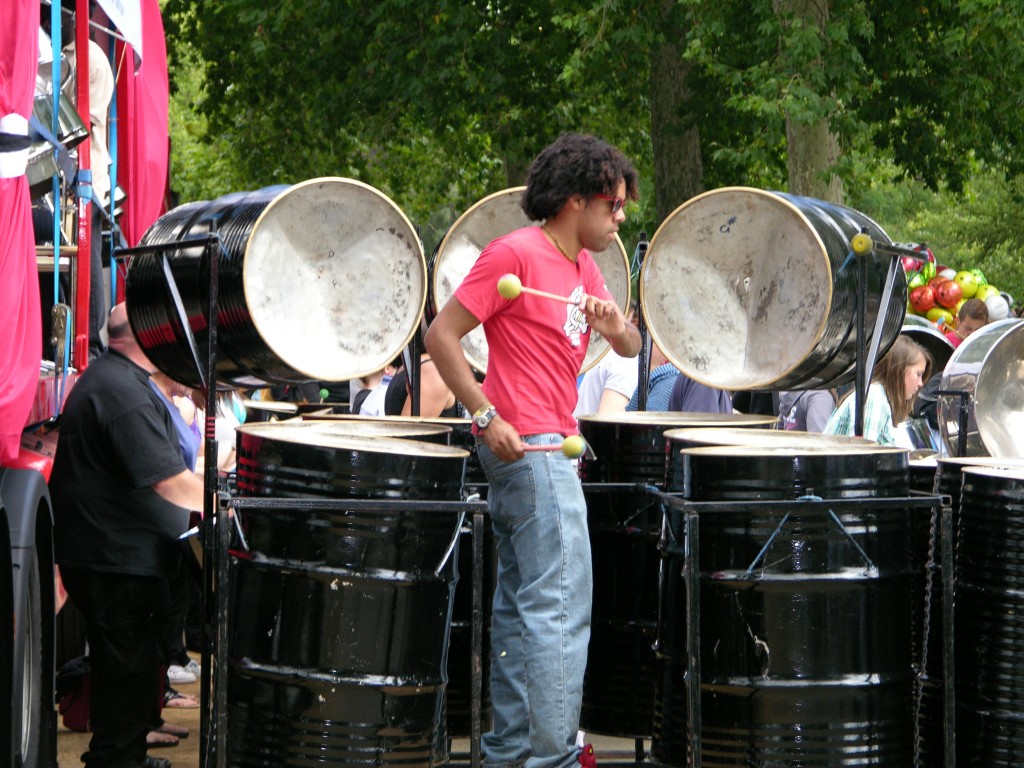
and festive
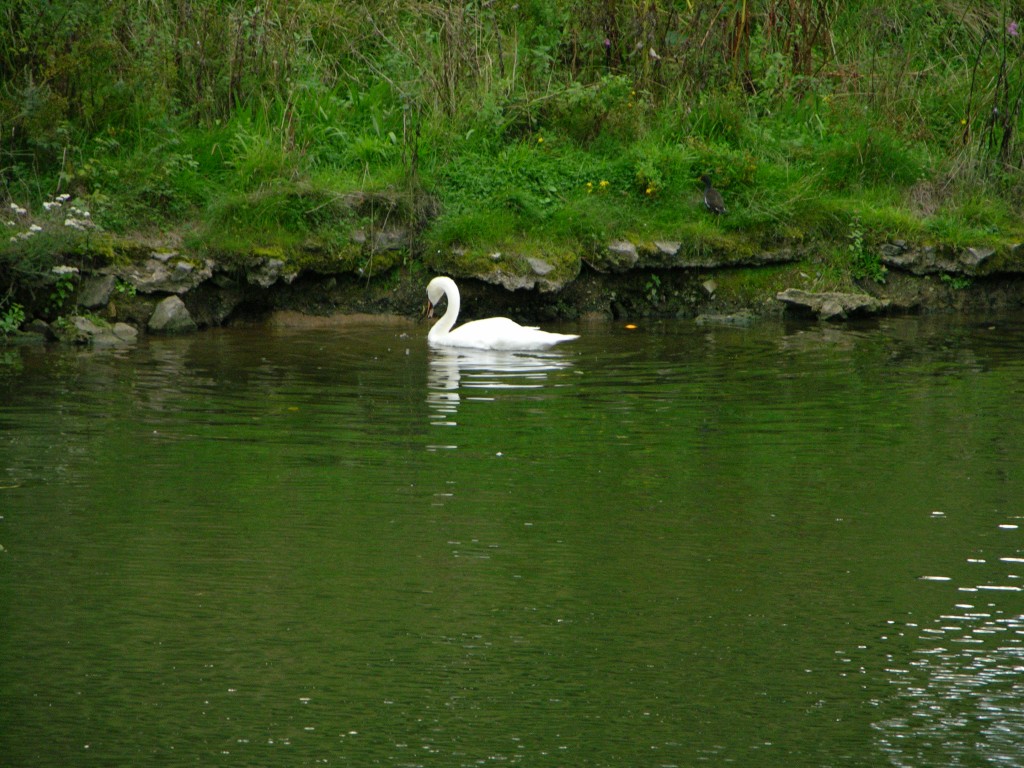
yet serene.
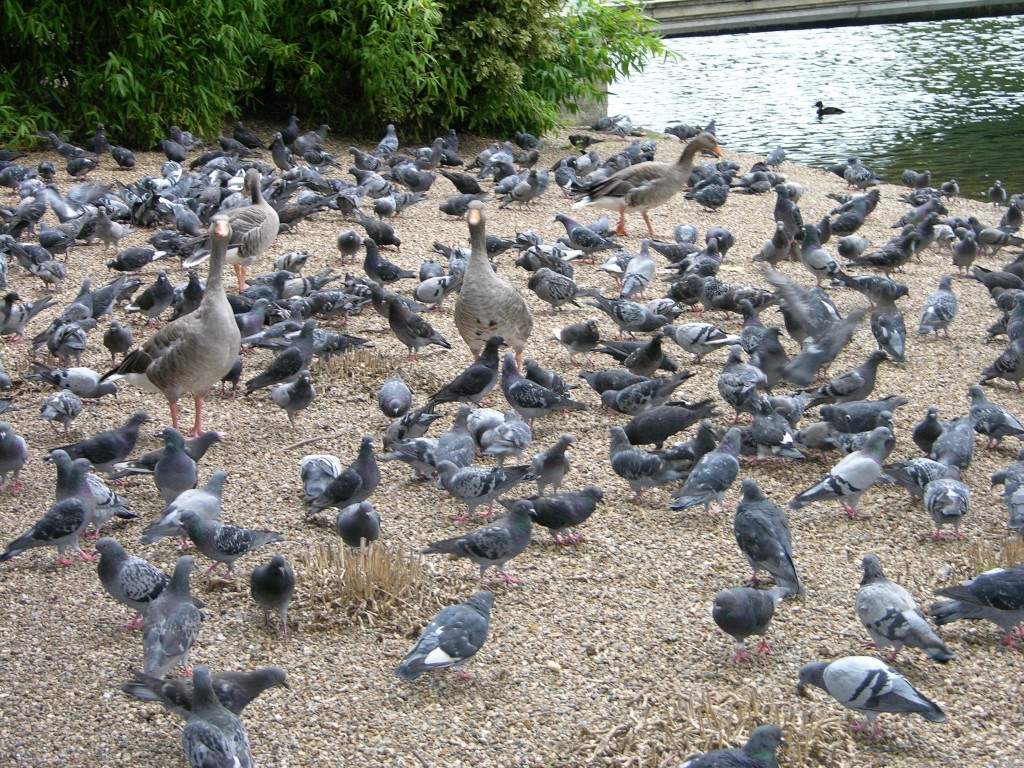
You can bring the whole family...
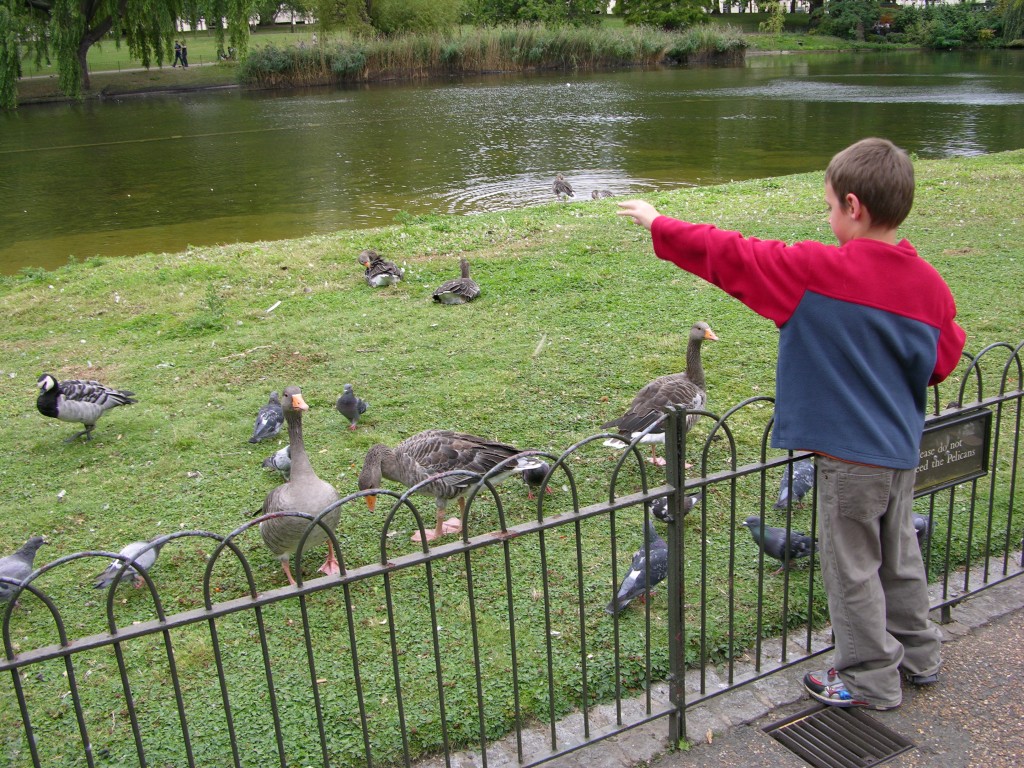
or just the kids.
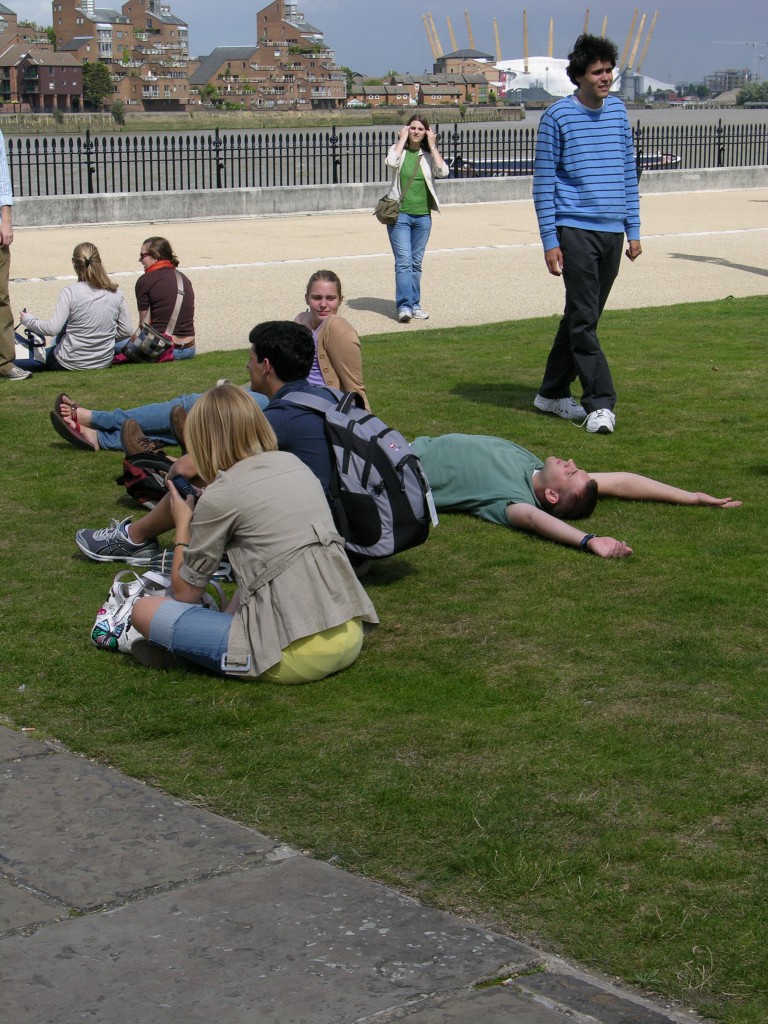
So sit back and relax.
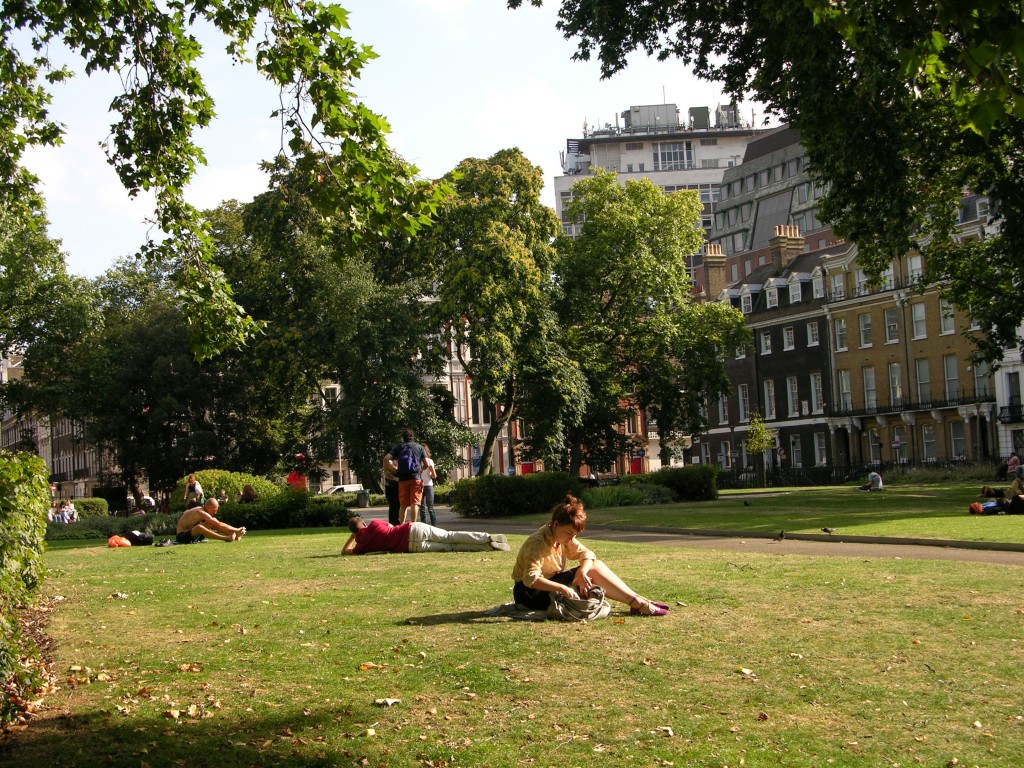
Soak up some sun.

Then, cool off with a quick dip.
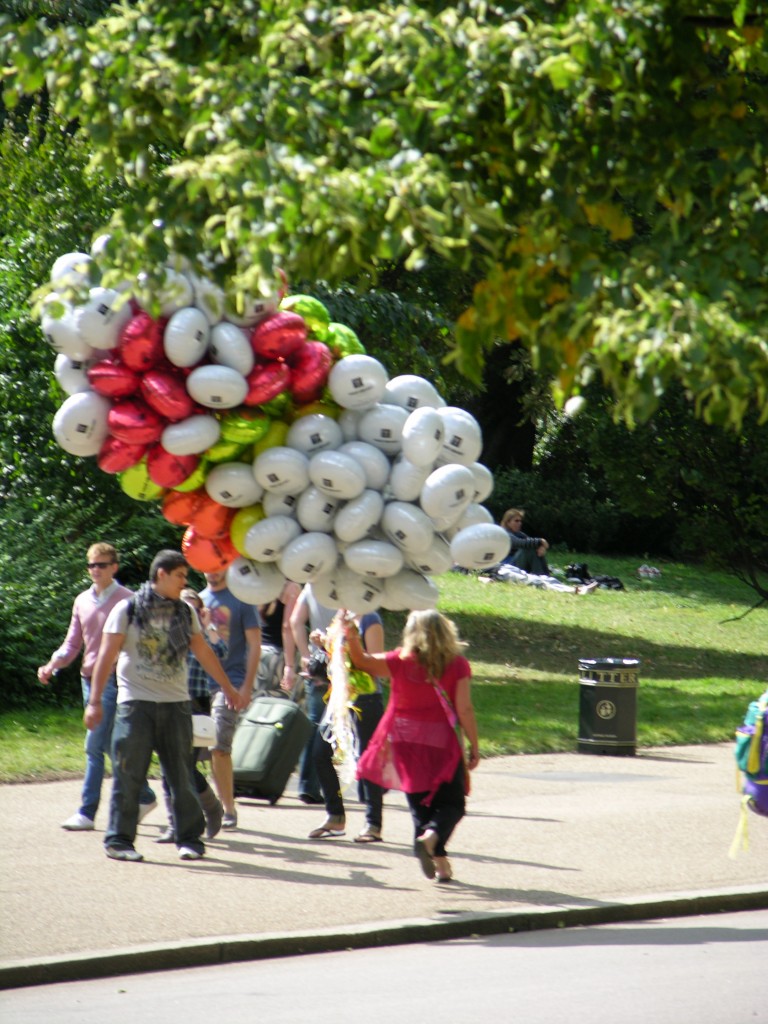
But no matter who you are or what you do...
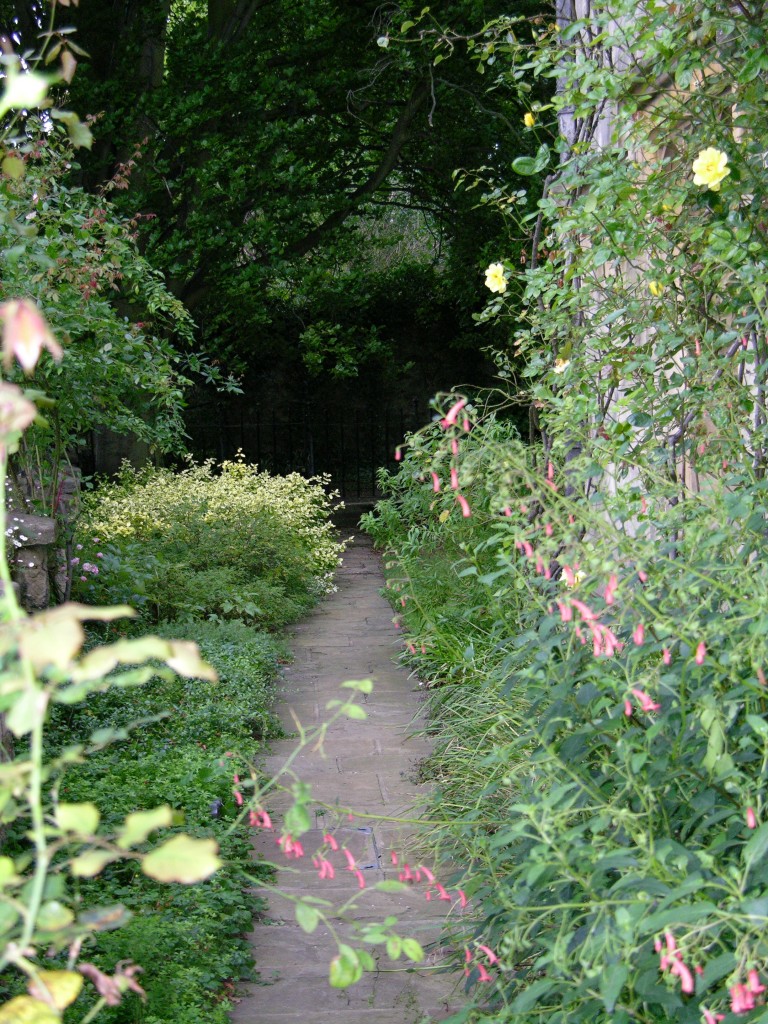
green spaces lead you straight to London's heart and soul.
Tags: Sarah
September 14th, 2009 · 1 Comment
During our time in London we’ve had the opportunity to attend many theatre performances. As I chose to see the optional plays as well, the total count comes to 6: Troilus and Cressida, Arcadia, All’s Well That Ends Well, As You Like It, Pitmen Painters, and Blood Brothers. Although I could probably write an entire paper on each of the plays, I would actually like to discuss the three Shakespeare plays I saw, especially the differences in the theatres where they were performed: The National Theatre and Shakespeare’s Globe.
The first Shakespeare performance we saw was Troilus and Cressida. To be honest, I wasn’t all that excited about the story when I read the play over the summer as it was not as engaging as his more famous plays I was familiar with already. Therefore, I wasn’t too excited to stand for three hours through a play that I thought would be rather boring. The experience at the Globe was exactly opposite of what I was expecting, though. I loved being so close to the actors that I could see every minute facial expression. Seeing the live performance was also much more entertaining than reading it and I learned that you really must see a Shakespeare play to truly appreciate all of the subtleties that are often lost in the text.
All’s Well That Ends Well was performed in the Olivier Theatre of The National Theatre. The Olivier seats about 1200 people and is styled after a Greek amphitheatre. During our tour of the National Theatre, we learned that this semi-circular shape allows the actors to maintain a connection with the entirety of the audience. While this may be a better set-up than the raised stage in the front, especially for Shakespeare, one still has the experience of the lights going down and watching the events unfold from afar. I definitely did not feel a personal connection with the actors and at many points I could barely see their faces or expressions. Overall, I felt kind of far away and uninvolved. I found the play to be mediocre. It had some funny parts, but none were all that “laugh-out-loud.” I don’t necessarily think that this play was any worse than Shakespeare’s other plays as it is such a well-known title; I simply think I felt disengaged with the performance.
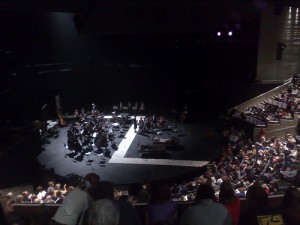
The Olivier
As You Like It proved to me my love for Shakespeare’s Globe. This performance was so incredibly interactive I enjoyed every second of it. At first, I regretted opting for the groundling ticket as I had just come from giving my walking tour, but I later came to realize it was the best place to be for the performance. During the play, the actors walked through the audience and even acted out the wrestling scene in the front of the groundling section. There were numerous points during the show when the actors made side comments about the audience that could not be heard from the seats farther away.
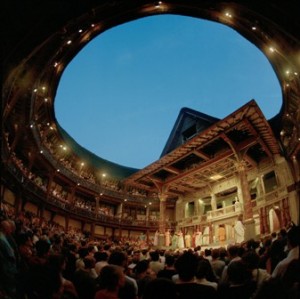
The Globe
The style of the stage at the Globe is the way Shakespeare intended his works to be performed. We’ve heard some criticism about the Globe, especially from A.N. Wilson, because of its links to Disney, its appeal to tourists, etc., etc. I don’t necessarily disagree with such observations, but I do think the Globe deserves some justification. There are few venues where one can see Shakespeare’s plays performed in this manner, and frankly I feel this is the best way to see these performances.
Tags: Sarah · Theatre
September 14th, 2009 · 1 Comment
Today Sarah and Alli ventured into the Cabinet War Rooms and the Churchill Museum. From remarks from our classmates, we thought it would be a quick trip through, but it most certainly was not! The museum was packed full of video footage, interactive exhibits, artifacts, and sheer information. For us to fully read and thoroughly explore the place, it probably would have taken us about 3 hours. Since it was the most interactive and technology-based of all the museums we had gone to in London, we would like to further discuss the use of these ideas.
Both of us have worked with museums and exhibits this summer, so neither of us can help it but to look at exhibits with a more critical eye. The Churchill Museum, only just recently opened in February 2005, relies on its “cutting-edge technology and multimedia displays” to bring Churchill’s story to life. The displays include a 15 metre-long interactive lifeline that, by sliding your fingertips along a strip, you can access information from every year of Churchill’s life.We felt the most effective interactive display was a touch-screen poll that initally asked the guest’s opinion on a certain aspect of Churchill’s life, such as “Do you think Churchill was a good wartime leader?” You were then offered more information on your topic and then reasked the question to see if your opinion changed.
We then thought about the importance of technology in museums and what it has added to the visitor experience. Technology has improved museum exhibitions in many ways: visitors can access historical documents, watch video footage, play “educational games” to learn information, and the museum is able to house much more materials through databases than they could before. It also allows visitors to choose whether they would like to view more information or “do research” or they can decide to move on. In this way, the experience is much more “tailor-made” for the visitor, allowing them to explore their own interests.T
The use of technology comes at a price. First of all, many museums do not even have the funding to afford such displays set up, even though it would benefit them greatly. Many museums, whether they are being rennovated or newly opened, are almost expected to have some sort of technology involved. Also, as we all know too well, the use of technology often comes with glitches and is susceptible to malfunctioning. The 15 metre interactive timeline was a great idea, but we could not really figure out how to use it! For two 20 year-olds who grew up using technology, we can’t even imagine older folks trying to figure out some of these displays.
Overall the technology benefitted our experiences in the Churchill Museum. We noticed most of the visitors engaged with the interactive media and we learned a whole lot more than we expected to. However, museums need to carefully evaluate their reliance on technology-based exhibits. The ideal exhibit would be a balance of both the traditional artifact-based model with some elements of technology to enhance the objects and the concepts presented.
Tags: Alli · Sarah
September 13th, 2009 · No Comments
It’s taken me a while to formulate my thought about religion and identity, but I think I can finally say something on the topic.
Sikhism and Hinduism are fairly new to the UK, as Sikhs began immigrating overseas in the 1950s, after the liberation of British India (1947) and the division of Muslim Pakistan from Hindu India (this division cause fighting in the Punjab region between Muslims, Hindus, and Sikhs). According to the BBC, while Hindus also began immigrating in the 1950s, Hindu immigration particularly increased in the 1970s when Indians were forced to leave many newly independent African countries, such as Kenya and Uganda. In London, these groups settled into lower class areas, such as the East End where immigrants have traditionally lived since the Huguenots. As we learned from Salaam Brick Lane and Brick Lane, this area often suffers from racial tension and violence (though the neighborhood has been gentrified a bit since Tarquin Hall’s days on Brick Lane).
If our visits to the Southall Sikh Gurdwara and the Sri Swaminarayan Mandir in Neasden proved to me one thing, it is that Sikhs and Hindus are clearly still seeking to find their place in the larger London society. Each place of worship we visited had numerous pamphlets and other resources for learning about their religion. Within these pamphlets (and of course the exhibition on “Understanding Hinduism”), both religions cited famous white guys praising the peacefulness of the corresponding religion. I don’t mean that sentence to sound as cynical as it might seem, but it just appeared to me that the institutions were really trying very hard to find a way to convince outsiders not to fear what is different. However, instead of simply informing visitors of their beliefs and practices, it was found necessary to justify these beliefs and practices with a white man’s approval. The most blatant example of this can be found in the “Understanding Hinduism” exhibition at the Mandir. In the section, “Hinduism for the individual,” the exhibition reads: “Hinduism, through its heroes and history, relays the real values of life. As George Bernard Shaw confirmed…” This statement raised a few questions in my mind. Most importantly: What makes George Bernard Shaw the authority on the “real values of life?” Shaw was famous for many things, but I’m fairly certain an expertise on Hinduism is not one of them. I would much rather hear the Hindus’ or the Sikhs’ own views on their religions, as I did not feel such justifications helped me to learn.
I would also like to comment on an observation made by many classmates in blogs and conversation about the relative modesty of the gurdwara when compared to the highly decorated mandir. In any religion the size and intricacy of a building of worship is determined by the community in which it is built and the amount of funding available. I’m sure none of the churches in our neighborhoods compares to St. Paul’s or St. Peter’s. In the same vein, the gurdwara we visited doesn’t compare to the Harmandir Sahib. The mandir in Neasden is much grander than mandir near my house in Somerset, NJ. The places we saw were single examples of larger religions and we must be careful when making observations about the religions as a whole.
Whenever I’m given a difficult topic to write about I try to go back to the basics. What is identity? According to Merriam-Webster, identity is the “sameness of essential or generic character in different instances” or “the distinguishing character or personality of an individual.” So, how can this be applied to immigrants in England?
In the various immigrant neighborhoods we have visited, it is clear that the communities are attempting to maintain some sort of “sameness of essential or generic character.” They built religious institutions, opened shops and restaurants, and created a small community that is similar to their home. In other ways, the community’s identity is forced to change when it moves to a new country. The environment is different. Ways of dress could change. New languages are learned in order to get jobs and communicate with others. A new country presents many challenges for an immigrant group and at some point something has to give, and not everything can stay exactly the same.
On an individual level, it’s much more difficult to generalize how one’s “distinguishing character or personality” is challenged by immigration. As we learned from Brick Lane, many times a person’s values can be completely transformed. When Nazneen first comes to England, all she wants is to return to Bangladesh and she never speaks out against her husband. By the end of the novel, she refuses to return with him. We’ve also learned about some of the challenges faced by second-generation immigrants. Magid, Millat, and Irie are caught between two worlds: their parents’ expectations for them and their own society. The ease of adaptation is also affected by economic status. Doctors and grad students face different challenges than do poorer people forced to live in violent neighborhoods.
Tags: readings · Sarah
September 7th, 2009 · 2 Comments
During our time in London, we have noticed that many of the religious institutions we have been visiting rely on gift shops and cafés to increase revenue. Some basic internet research shows that many people have mixed feelings about whether or not this practice is acceptable. Generally speaking, we do not believe it is necesarily inappropriate for a church or temple to sell refreshments or gifts related to the location or religion. Given a decrease in European religious sentiment and worldwide economic difficulty, donations aren’t a very reliable source of funding. If a place is to be kept open to a public (tourists and worshipers alike) it needs money to run. Employees and utilities need to be paid and maintenance isn’t cheap. It’s easy to understand the rationale behind the decision to open a shop.
For the most part, the places of worship we have visited had signs informing the guest that the proceeds from the shop or café benefit either local charity or the building itself. For example, St. Martin’s in the Fields’ gift shop benefits “the work” of the church. Additionally, the products sold are related to Christianity, the church itself, and the church’s location. Furthermore, the Shri Swaminarayan Mandir‘s gift shop sold incense, prayer beads, and other products Hindus would need for everyday use in addition to more “touristy” items. We consider all odthese items to be appropraite for such a shop; they are directly related to the place and its purpose.
Whilst visiting the Christ Church College in Oxford (this may or may not have been related to Harry Potter), we stumbled into “The Cathedral Shop” adjacent to the college’s chapel. Most of the items sold by this shop were very similar to the other gifts shops we previously encountered. There were chalices, books, t-shirts, postcards, etc. There was a fairly modest Harry Potter section relating the the films that were partially created at the location alongside a small section dedicated to Lewis Carroll’s Alice in Wonderland, which was written in Oxford.
However, we did notice a few items that did not seem appropriate for a shop entitled “The Cathedral Shop.” Instead, they seemed to be trying VERY hard to appeal to young, hip buyers:
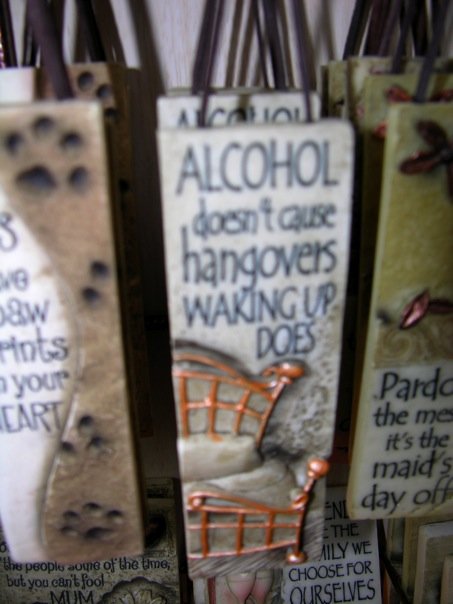
The last time we checked, no religion condones binge drinking and sleeping until 4pm and Oxford isn’t particularly famous for its hangovers.
We’re curious to see what everyone else in the group thinks about the idea of gift shops in religious buildings and what kinds of items they should sell.
Tags: Alli · Churches and Cathedrals · Sarah
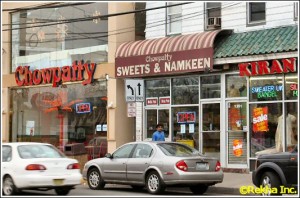
"Little India"
I haven’t missed home much during the past two weeks. We have been so busy with tours and museums and plays that I simply haven’t had time to be homesick–until yesterday and today. London’s East End and Southall reminded me so much of my hometown that I couldn’t help but long for good old Iselin, a place I took for granted before I came to college.
The town I’m from is extremely diverse and has a large South Asian population. For example, the top languages spoken in my high school (as of 2008) are English, Gujarati, Spanish, Urdu, Panjabi, Hindi, and Tagalog. Oak Tree Road and Green Street, the two main roads running through Edison and Iselin, NJ are lined with sari shops, curry houses, cash and carries, and more. The annual India Day Parade is the biggest event around and Bollywood stars are commonplace on billboards.
Growing up, I never really realized or appreciated the cultural diversity I experienced on an everyday basis. Even though the Indian/Bengali population has left the greatest mark on my area, there are numerous people of other backgrounds who reside in my area. The example I often use to make this point is if you come to visit me, I can find ANY kind of restaurant you can think of (Indian, Japanese, Chinese, Thai, Greek, Mexican, Spanish, Kosher, Portuguese, Mongolian, Polish, and Ethiopian are the ones I can list off the top of my head). Before coming to Dickinson and Carlisle, I never really thought about how much of the rest of the United States is, in fact, not like this at all.
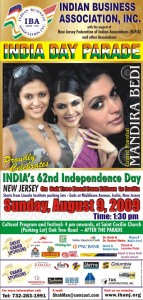
Advertisement for the India Day Parade on Oak Tree Rd.
Living in such a culturally diverse place has not always led to positive experiences. As we’ve seen and heard of in London, there is a lot of ethnic tension in my area due the sudden boom of immigrants that started in the 1990s. I’ve heard my friend’s parents refer to their neighbors as the “terrorists down the street,” and “dot-heads,” “deets,” and “hajis,” are only a few of the pejorative terms heard on a regular basis. I remember one of the blog posts mentioned an altercation between a white man and a South Asian man in a market, which reminded me of a time I was in the Target by my house and a white man shouted at the Indian man in front of him in line to, “go take a fucking shower and come back when you know some fucking English.” Another friend’s mother claimed that the Indians “stole” our Christmas light and use them for their holidays, disregarding the fact that Diwali is the Festival of Lights and electric lights are common decorations for purposes other than Christmas. I’ve even lost one friend within the past year because I refused to put up with his increasingly racist comments any longer.
I hope that this relatively new immigrant group will in time become more accepted in both American and British society. However, I might be rather pessimistic or cynical, as I can’t help but think that a new population will replace the lowest rung on the social ladder once this is allowed to move up. What I know for sure, though, is that all I can do is my part to try to fight intolerance and racism so that people might realize all of the wonderful things various cultures have to offer.
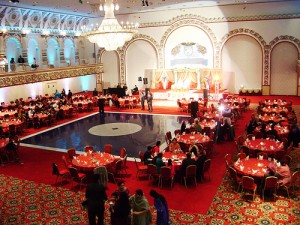
Royal Albert's Palace--An Indian catering hall where my friend had her Sweet 16
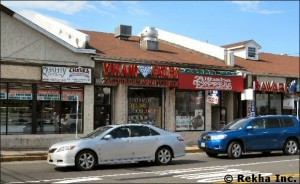
Oak Tree Road
Tags: Sarah
September 1st, 2009 · 1 Comment
I’ve always loved performing. I danced (mostly ballet) from age 5 until I graduated high school. I also participated in a theatre camp during the summers of middle school, my best role being Sinister the Prime Minister in The Emperor’s New Clothes. I had to stop acting in high school as the play season interfered with bowling season (though I did work on the stage crew one year), and I’ve found myself too busy at Dickinson to get involved with the theatre or dance scenes in college. I often miss being on stage; therefore, I greatly appreciated today’s activities: a talk with Rick Fisher and a backstage tour of the National Theatre.
I found Mr. Fisher to be an engaging speaker and one could easily tell he loves what he does. I had never really thought about the intricacies of stage lighting before this morning. Obviously, lighting is important to any show. The audience needs to be able to see the performers. I learned this morning, though, how carefully lighting must be designed in order to set particular scenes. Natural lighting can tell the audience the time or location of the scene: night or day, indoors or outside. Different colors of light can set the mood of a scene, and flashes of light can help the audience perceive characters’ emotions. I liked what Mr. Fisher said about lighting: that the best lighting isn’t noticed, it’s just right. I feel this is exactly the way to view lighting–it completes a performance. This statement reminded me of a speech given by my high school band director. He told us that no section of a band is more important than another; without one of the sections a piece seems incomplete. He then proceeded to have us play our music without the low brass, then without the percussion. While these sections aren’t the melody of the piece, the song just doesn’t sound right without them. I feel like lighting serves the same purpose in a performance. Lighting isn’t something one might think of or notice when seeing a play, opera, or recital, but without the right lighting, a show is imperfect.
Our tour of the National Theatre was eye-opening. Walking through the building, I couldn’t possibly imagine the creativity needed to design a building to house three stages, numerous workshops, storage, etc. I loved going backstage and seeing all of the work that goes into putting on a show. We don’t always appreciate stage crews, costume designers, or prop artists. They aren’t the people we see when we attend a performance.
Today’s discussion and being back stage gently reminded me that the actors aren’t the only people that make a great show.
Tags: Sarah · Theatre
August 30th, 2009 · 1 Comment
Today Sarah, Chelsea and I made a journey to the Victoria and Albert Museum. Upon immediately entering the V&A, we noticed that it was going to be a hodgepodge of all sorts of items. The first room we entered featured various nudie sculptures that caught our attention. Then to our right we noticed the “Fashion” exhibit. The “Fashion” exhibit featured everything from a 1700s brocade ball gown to futuristic designs. Being in a girly mood, we decided to go to the jewelry section next, we can dream can’t we?
On the way, we stumbled upon an ironworks exhibit, gargantuan columns, and Asian textiles. One of the best exhibits, we thought, was the Theatre and Performance gallery. This exhibition housed anything from ballet costumes to miniature set designs and various recordings of performances. This kind of exhibit, we felt, was rare compared to the other museums we had visited.
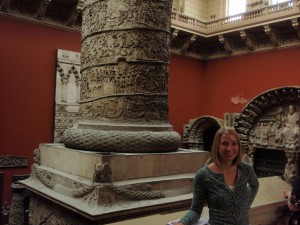
Alli morphed by a gargantuan columnNo caption needed.
As a whole, we felt that this museum showed more socio-cultural exhibits than the rigid British Museum and National Gallery. The 20th Century exhibit showed anything from an iMac to early cell phones. It included a section about technology as an astestic, featuring a pink vacuum cleaner from the 1970s. This museum tended to show more “everyday life” items rather than royal jewels and strictly upper class items that are less easy to relate to. Even the jewelry exhibit included less elaborate pieces, such as funerary rings, that did not necessarily belong to royalty or a famous name. These items weren’t just “dug up from the ground” and put on display, but they were placed in a better context.
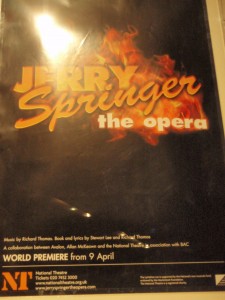
No caption needed.
Additionally, the V&A seemed to be more “British,” containing the most number of galleries dedicated to English artifacts and history. They had 13 rooms entitled “British Galleries: 1760-1900” whereas the British Museum only had 2 rooms and the National Gallery had 4. It is interesting that these two museums are considered “national” museums and yet they have the least amount of national artifacts.
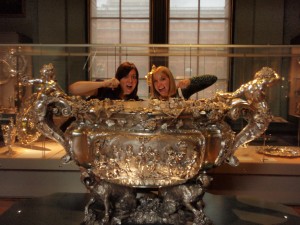
Sarah and Alli drinking from the giant punch bowl
Tags: Alli · Chelsea · Museums · Sarah

























